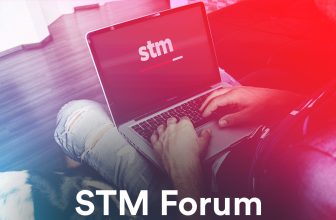
ChatGPT and other AI tools are clever, but I like to think I’ve got a few tricks up my sleeve too. Here are some strategies I’ve found useful for crafting writing prompts that are a bit trickier for AI to handle.
Crafting writing prompts that are completely foolproof against AI can be a tough nut to crack, but that doesn’t mean we can’t employ strategies to make it harder for AI to excel. These methods can also increase the likelihood that the writing students submit in your class is truly their own work.
Over the past year, I’ve noticed a significant increase in AI-generated work being submitted in my classes, and this trend has continued. As a result, I’ve become more adept at spotting AI-generated content. However, I’ve also honed my skills in crafting writing prompts that are less friendly to AI.
I find it helpful to think of AI prevention like the Swiss cheese analogy used in public health. Each strategy on its own might have some weaknesses, but when you layer them together, you create a strong barrier that’s difficult for AI to penetrate.
These eight strategies might not completely stop students from submitting AI-generated work, but I’ve found that they can encourage genuine human writing. Plus, they help ensure that any work submitted via AI won’t actually meet the assignment’s requirements.
1. Writing AI-Proof Prompts: Put Your Prompt Into Popular AI tools such as ChatGPT, Copilot, and Bard
A quick way to gauge how AI tools will handle your writing prompt is to plug it in and see what they come up with. If they churn out a decent response right away, it’s probably a good idea to adjust the prompt.
For example, in one of my classes, I ask students to write about a prized possession. When I input this prompt into an AI chatbot, it often generates an essay about a family member’s cherished watch. Now, I’m extra vigilant for any essays centered around watches.
2. Forbid Cliché Use
One of the simplest and fastest ways to reduce AI use is by cracking down on clichés in writing assignments. AI tools thrive on clichés, so prohibiting them can significantly decrease reliance on AI-generated content.
Equally important, enforcing this practice will also help your students improve their writing skills. Any seasoned writer will tell you that clichés should be avoided like the plague.
3. Incorporate Recent Events
It’s worth noting that the free version of ChatGPT, limited to events up to 2022, might be the only accessible tool for some students. Even though there are plugins to enable internet searches and access to other AI tools, not all students may utilize them.
Moreover, based on my experience, AI tools often have difficulty incorporating recent events as seamlessly as they do historical ones. Therefore, linking class material and assignments to recent events like a recent State of the Union speech or the Academy Awards can diminish the effectiveness of AI-generated writing.
4. Require Quotes
AI tools have the capability to incorporate direct quotations, but they often struggle to do so effectively. The quotes they use tend to be brief and may not be well-integrated into essays.
Requesting recent quotes from AI tools can pose challenges for today’s automated writers. For example, when I asked Microsoft’s Copilot to summarize the recent Academy Awards using quotes and specifically requested a quote from Christopher Nolan’s acceptance speech for “Oppenheimer,” it instead quoted something Nolan had said previously. Additionally, Copilot mistakenly quoted from Wes Anderson’s acceptance speech, even though Anderson wasn’t present at the awards. These inaccuracies highlight the limitations of AI tools in accurately retrieving and using recent quotes.
5. Make Assignments Personal
Encouraging students to reflect on material in their own lives can effectively deter AI writing. In face-to-face teaching, instructors can develop a rapport with students, making it easier to discern when personal details are authentic.
Teaching online presents challenges, but I’ve found that even in virtual settings, it’s often easier to spot when a more personalized prompt was written by AI. For instance, one student submitted a paper professing her love for skateboarding, but it lacked specific details, raising suspicion of AI involvement. Similarly, another student’s post about a pair of sneakers was evidently AI-written due to its clichés and other telltale signs.
6. Make Primary or Scholarly Sources Mandatory
Requiring sources that aren’t readily available on the internet can effectively thwart AI writing attempts. For example, I often task students with finding historic newspapers for certain assignments, as AI tools typically can’t incorporate these sources.
For instance, when I asked Copilot to compare media coverage of the first Academy Awards to the most recent awards show and to include quotes from historic newspaper coverage, the comparison was lacking, and there were no quotes from historical newspapers.
Additionally, AI tools struggle to integrate journal articles. By encouraging students to include these sources, we ensure that their work delves deeper than what can be uncovered through a simple Google search. Not only does this make it more challenging for AI to produce, but it also elevates the overall quality of the work.
7. Require Interviews, Field Trips, Etc.
Expanding on primary and scholarly sources, you can have your students conduct interviews or visit historic sites and museums. These interactive experiences are beyond the capabilities of AI, ensuring truly human-generated work.
While it might not be feasible for every assignment, incorporating these activities is the most effective way to guarantee authenticity in student work.
To further mitigate concerns about AI use, consider asking students to include photos of themselves with their interview subjects or from their field trips. While AI-generated art is improving, remember the Swiss cheese analogy: adding multiple layers of prevention can reinforce the integrity of student work.
8. Have Students Write During Class
As I mentioned earlier, none of the discussed methods are foolproof, and there are already ways to circumvent these safeguards with more likely to emerge in the future. So, if you’re truly concerned about AI use, you might consider what I refer to as the “nuclear option”: requiring students to write essays in person.
While this approach is effective at preventing AI use, especially for shorter pieces, it comes with significant drawbacks. Writing longer pieces in person can be challenging for both instructors and students alike. Moreover, such a requirement could foster a tense atmosphere in the classroom, centered more on preventing AI use than on actual teaching. Additionally, this approach is not practical for online teaching.
Given the prevalence of AI writing in education, I understand why some teachers may resort to the “nuclear option.” While I hope that suggestions 1-7 prove effective, if AI-generated papers continue to be a problem in your classroom, this blunt-force method can serve as a temporary solution.
Conclusion
In conclusion, as the influence of AI writing continues to permeate educational settings, teachers face the challenge of safeguarding the authenticity of student work. While implementing strategies such as refining prompts, emphasizing personal reflection, and incorporating diverse sources can serve as effective deterrents, they are not foolproof. Recognizing the limitations of these methods, some instructors may opt for more drastic measures, such as requiring in-person essays, as a last resort.
However, it’s crucial to acknowledge the potential drawbacks of such approaches and strive for a balanced approach that prioritizes genuine learning experiences over the mere prevention of AI use. Ultimately, navigating the landscape of AI in education requires ongoing adaptation and innovation, ensuring that the integrity of student work remains paramount in the pursuit of academic excellence.







